Giant Button Fern (single plant)
Original price was: ₹199.₹119Current price is: ₹119.
3 in stock
Description
Quantity- Single Plant
BUTTON FERN
Pellaea rotundifolia, the button fern, is a species of fern endemic to New Zealand, where it grows in scrub and forests.It is also a popular garden plant and house plant, tolerating low temperatures but not freezing. Button fern is bushy and compact, with small, round leaflets. It is a popular patio and container plant. Relatively cold-tolerant, it can be planted outdoors in gardens where temperatures do not go below freezing. It can look beautiful in the front rows of containers and raised beds because it readily grows over the edges.Â
this species grows best in acidic, well-drained soil.
Do you want an easier to grow fern that doesn’t need as much humidity as other ferns, and that stays a manageable size? The indoor button fern is a great option for you. Button fern houseplants are small and low-growing ferns with arching fronds of beautiful, round leaflets.Â
This plant is not to be confused with the lemon button fern which is a completely different plant (Nephrolepsis cordifolia). Â
Bathrooms are great places to grow these plants, assuming that there is enough light there. Â Another nice part of having a button fern as a houseplant is that they tolerate drier soil better than other ferns.
Button ferns like a peat based potting mix to which perlite has been added to improve drainage. They also prefer shallower pots versus deep pots. Fertilize the plant throughout the spring and summer with one quarter strength all-purpose houseplant fertilizer.  If your entire plant is turning yellow and wilting, you have probably overwatered. Take your plant out of its pot to see if any of the roots have rotted. If you see any black roots, the plant has suffered from root rot and it is probably best to just dispose of the plant. You can easily propagate a button fern in the spring, when it starts active growth, by dividing it at the roots and potting up the segments. You can use a sharp knife to cut through the root ball into as many sections as you’d like.  Once you get into a good routine, the button fern makes a wonderful houseplant, especially if you have not had success with other ferns.Â
Pellaea rotundifolia is a compact, evergreen fern that can have more than 30 pairs of round, dark-green, leathery pinnae on fronds up to 18 in (460 mm) in length.The Latin specific epithet rotundifolia means “round-leavedâ€. Though native to New Zealand and Australia, button ferns can be grown outdoors in USDA growing zones 9 through 11. Though they can be slightly fickle when grown indoors, with enough care and attention to its needs, a button fern makes an excellent houseplant. Button ferns are small compared to other fern varieties (they only grow 12-18 inches tall), making them ideal candidates for small spaces. Their small leaflets become more oval-shaped as the plant grows.
What makes it special
- This plant is low-maintenance one
- air purifying andÂ
- cute as a button
- has a slender appearance owing to a lush foliage that is made up of tiny dark green leaves spaced out on a delicate stem.Â
- The easy going Button Fern is perfect for your table or in a hanging pot.
- Button ferns are small compared to other fern varieties (they only grow 12-18 inches tall), making them ideal candidates for small spaces.Â
- Their small leaflets become more oval-shaped as the plant grows.
Plant specifications
| Plant height | 12 to 18 inches tall |
| Plant spread | Creeping rhizomes grow from several inches to one foot per year |
- Above specifications are indicative only actual dimensions may vary by + – 10%
| Common name | Button fern |
| Scientific name | Pellaea rotundifolia |
| Maximum reachable height | 12 to 18 inches tall |
| Native habitat | New Zealand |
| Type | Evergreen fern |
| Leaves | Button shaped |
| Stem | Delicate stem |
Planting and care
Sunlight
- Bright indirect light to part shade at most is best for these plants.
Temperature
- A temperature range of 60 to 75 degrees F. (16-24 C.) is best but avoid any drafts.
Soil
- Button ferns like a peat based potting mix to which perlite has been added to improve drainage.
Fertilizer
- Fertilize the plant throughout the spring and summer with one quarter strength all-purpose houseplant fertilizer. Â
Watering
- Button ferns like enough water, but detest soggy soil.Â
- Let the top portion of soil dry out between waterings.
- If the fronds are green and not wilted, you’ve found a perfect happy medium.
- Its affinity for humidity makes the button fern an ideal houseplant for a guest bath. Place it on a shelf or not-too-bright windowsill for visual intrigue, or place it in a hanging basket.
- Want more button ferns? In spring, simply divide your existing button fern with a sharp knife and repot the sections.
Key requirements to keep the plant healthy
| Sunlight | Bright indirect sunlight |
| Watering | Thrice in a week |
| Soil | Peat based potting mix |
| Temperature | 16 to 24 C |
| Humidity | 50% |
| Care level | Easy |
| Fertilizer | Houseplant fertilizer |
| Propogation | By division |
Special features
- Toxicity: Non-toxic to cats, dogs and humans
- Potting Mix: Rich and well-draining but also able to hold moisture
- air purifying
- Rounded leaflets which makes it beautiful
BUTTON FERN
Description
Pellaea rotundifolia, the button fern, is a species of fern endemic to New Zealand, where it grows in scrub and forests.It is also a popular garden plant and house plant, tolerating low temperatures but not freezing.
Button fern is bushy and compact, with small, round leaflets. It is a popular patio and container plant. Relatively cold-tolerant, it can be planted outdoors in gardens where temperatures do not go below freezing. It can look beautiful in the front rows of containers and raised beds because it readily grows over the edges.
this species grows best in acidic, well-drained soil.
Do you want an easier to grow fern that doesn’t need as much humidity as other ferns, and that stays a manageable size? The indoor button fern is a great option for you. Button fern houseplants are small and low-growing ferns with arching fronds of beautiful, round leaflets.
This plant is not to be confused with the lemon button fern which is a completely different plant (Nephrolepsis cordifolia).
Bathrooms are great places to grow these plants, assuming that there is enough light there. Another nice part of having a button fern as a houseplant is that they tolerate drier soil better than other ferns.
Button ferns like a peat based potting mix to which perlite has been added to improve drainage. They also prefer shallower pots versus deep pots. Fertilize the plant throughout the spring and summer with one quarter strength all-purpose houseplant fertilizer. If your entire plant is turning yellow and wilting, you have probably overwatered. Take your plant out of its pot to see if any of the roots have rotted. If you see any black roots, the plant has suffered from root rot and it is probably best to just dispose of the plant. You can easily propagate a button fern in the spring, when it starts active growth, by dividing it at the roots and potting up the segments. You can use a sharp knife to cut through the root ball into as many sections as you’d like. Once you get into a good routine, the button fern makes a wonderful houseplant, especially if you have not had success with other ferns.
Pellaea rotundifolia is a compact, evergreen fern that can have more than 30 pairs of round, dark-green, leathery pinnae on fronds up to 18 in (460 mm) in length.The Latin specific epithet rotundifolia means “round-leaved”.
Though native to New Zealand and Australia, button ferns can be grown outdoors in USDA growing zones 9 through 11. Though they can be slightly fickle when grown indoors, with enough care and attention to its needs, a button fern makes an excellent houseplant.
Button ferns are small compared to other fern varieties (they only grow 12-18 inches tall), making them ideal candidates for small spaces. Their small leaflets become more oval-shaped as the plant grows.
What makes it special
● This plant is low-maintenance one
● air purifying and
● cute as a button
● has a slender appearance owing to a lush foliage that is made up of tiny dark green leaves spaced out on a delicate stem.
● The easy going Button Fern is perfect for your table or in a hanging pot.
● Button ferns are small compared to other fern varieties (they only grow 12-18 inches tall), making them ideal candidates for small spaces.
● Their small leaflets become more oval-shaped as the plant grows.
Plant specifications
Plant height 12 to 18 inches tall
Plant spread Creeping rhizomes grow from several inches to one foot per year
● Above specifications are indicative only actual dimensions may vary by + – 10%
Common name Button fern
Scientific name Pellaea rotundifolia
Maximum reachable height 12 to 18 inches tall
Native habitat New Zealand
Type Evergreen fern
Leaves Button shaped
Stem Delicate stem
Planting and care
Sunlight
● Bright indirect light to part shade at most is best for these plants.
Temperature
● A temperature range of 60 to 75 degrees F. (16-24 C.) is best but avoid any drafts.
Soil
● Button ferns like a peat based potting mix to which perlite has been added to improve drainage.
Fertilizer
● Fertilize the plant throughout the spring and summer with one quarter strength all-purpose houseplant fertilizer.
Watering
● Button ferns like enough water, but detest soggy soil.
● Let the top portion of soil dry out between waterings.
● If the fronds are green and not wilted, you’ve found a perfect happy medium.
● Its affinity for humidity makes the button fern an ideal houseplant for a guest bath. Place it on a shelf or not-too-bright windowsill for visual intrigue, or place it in a hanging basket.
● Want more button ferns? In spring, simply divide your existing button fern with a sharp knife and repot the sections.
Key requirements to keep the plant healthy
Sunlight Bright indirect sunlight
Watering Thrice in a week
Soil Peat based potting mix
Temperature 16 to 24 C
Humidity 50%
Care level Easy
Fertilizer Houseplant fertilizer
Propogation By division
Special features
● Toxicity: Non-toxic to cats, dogs and humans
● Potting Mix: Rich and well-draining but also able to hold moisture
● air purifying
● Rounded leaflets which makes it beautiful
Only logged in customers who have purchased this product may leave a review.

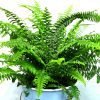
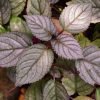
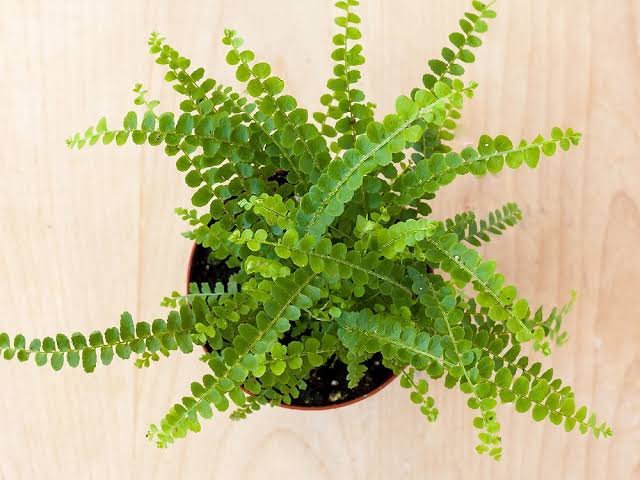

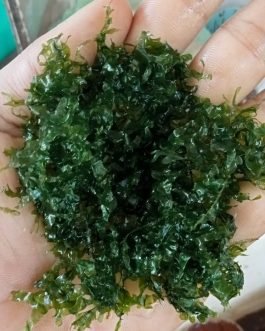
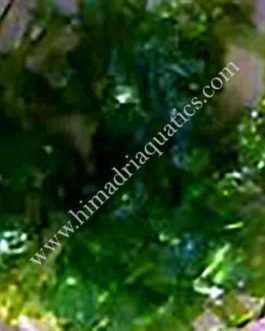
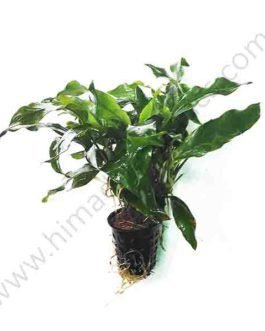
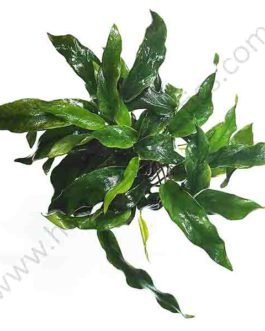
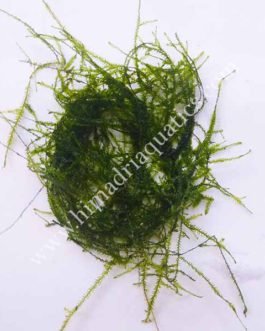

Reviews
There are no reviews yet.